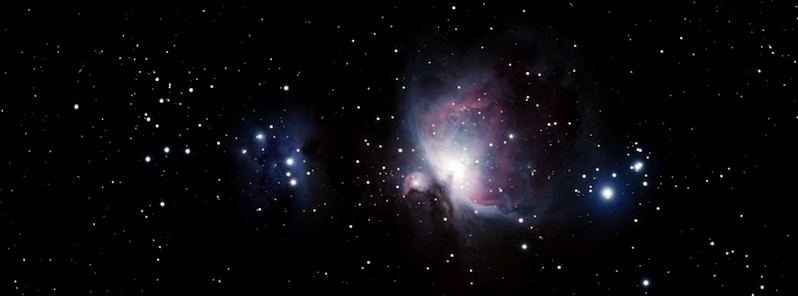
![]()
Incremental progress has been made on several fronts that may employ nanomedical strategies, to potentially counteract the deleterious effects of galactic cosmic rays and microgravity on human physiology The implementation of these strategies and the enhancement of their preventative, diagnostic, or therapeutic effects for future orbital, planetary, and deep space missions might be enabled via diverse and potent synergies between unique nanomedical applications of nanomaterials and nanotechnologies.
Galactic cosmic ray radiation consists mainly of high-energy protons and atomic nuclei, and contains about 1% free electrons. Since its discovery in 1912 by Victor Hess, there have been concerns that ionizing cosmic ray (HZE) nuclei may have negative effects on critical human physiological elements such as DNA, retina, neurons, and neurotransmitters. High energy HZE nuclei can inflict serious “microlesion” damage to cells along their impact trajectories as they transit through a column of cells. One estimate for the microlesion dose rate in a geostationary orbit for example, is approximately 9000 microlesions per cm3 of biological tissue per month.
A potential strategy for mitigating the effects of heavy-particle exposure, such as radiation-induced tumorigenesis, may be the introduction of powerful nanometric antioxidants such as fullerenes (C60 (Figure 1), single and multiwalled carbon nanotubes), halloysite clay nanotubes, and unique ceria (CeO2) nanoparticles (Ø20 nm).

Figure 1: Artistic rendering of C60 molecule
Concentrated antioxidants might be encapsulated within “nanocarriers” such as liposomes, hollow gold nanoshells and magnetic nanoparticles, or organic and inorganic nanotubes. In the future, autonomous nanorobotic self-implanting molecular dispensers (Figure 2) might facilitate the precisely controlled release of potent antioxidants, using reversible molecular sortation rotors

Figure 2: Artistic representation of conceptual autonomous implantable molecular dispenser
(Figure 3) over extended time periods to offer a significant measure of protection for astronauts from heavy particle exposure.

Figure 3: Artistic representation of conceptual reversible molecular sortation rotor. Freitas Jr., R.A., Nanomedicine, Volume I: Basic Capabilities, Landes Bioscience, Georgetown, TX, 1999
An alternate strategy might involve the nanomedical administration of therapeutic medical gases (e.g., nitric oxide (NO), carbon monoxide (CO), hydrogen sulfide (H2S)), which may serve as free radical-scavenging “chemical radioprotector” antioxidants.